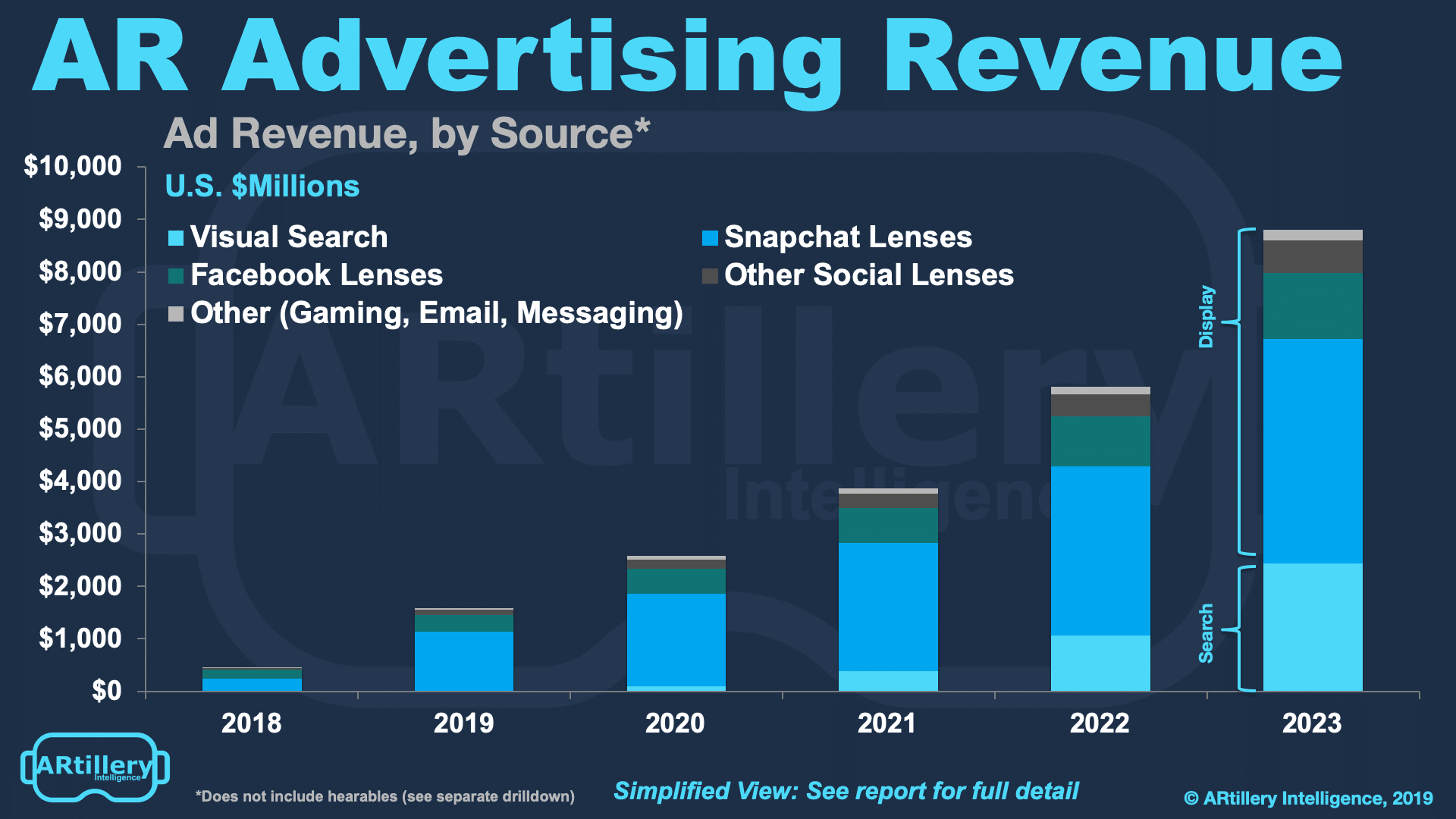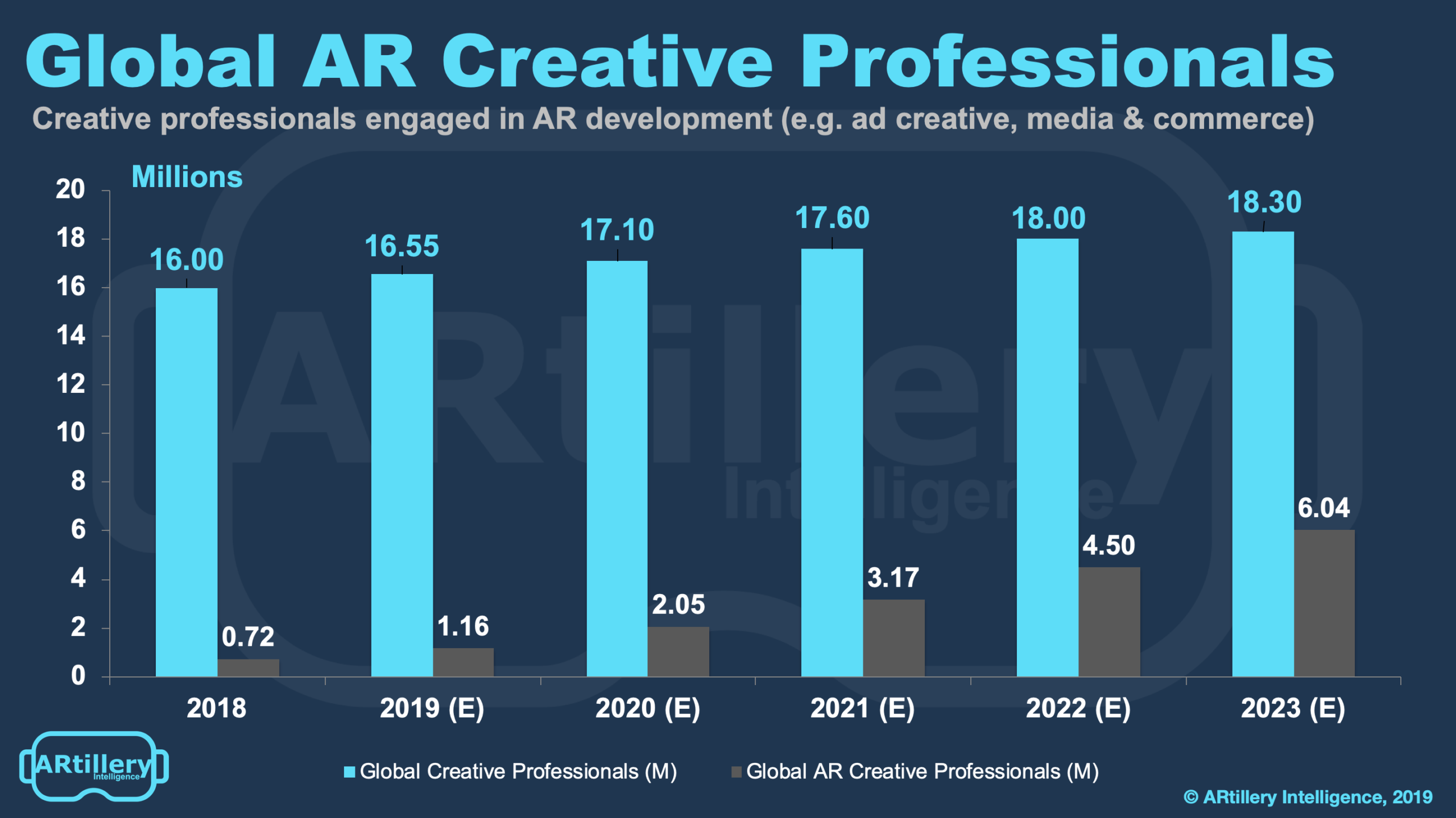
Data Point of the Week is AR Insider’s dive into the latest spatial computing figures. It includes data points, along with narrative insights and takeaways. For an indexed collection of data and reports, subscribe to ARtillery Pro.
One of AR’s most promising areas is B2B software to create consumer-facing lenses and animations. This is under the category of AR “building blocks” which we see as a major industry accelerant and revenue opportunity. It includes Unity, Amazon Sumerian and Adobe Aero.
In many cases, the intended users for these tools are creative professionals. These are the workhorses of the marketing world, among other areas. They’re the folks in currently graphic design, advertising and other digital creative. AR could be their next differentiating skill set.
Advertising is where this could really germinate, given the osmosis of talent to areas where real revenue is being generated (typical supply/demand dynamics). Advertising is one of the biggest growth areas in ARtillery Intelligence’s latest AR forecast, growing to $8.8 billion by 2023.

So that’s going to require lots of creative production for AR assets like branded lenses. The creative pros eligible for this opportunity will be in ad agencies, as well as in-house marketing departments of major brands. There are also lots of independent contractors in that world.
The total universe of creative professionals today is 16 million according to the aforementioned ARtillery Intelligence forecast. And the subset of that group that actively uses and is trained in AR creative production stands at 720,000 today, growing to just over 6 million by 2023.
Elsewhere is evidence from a recent Unity report that likewise supports a somewhat optimistic view of the opportunity to provide creative professionals with AR development tools (as Unity does). The results are unsurprisingly mixed. Like in other areas, AR adoption is happening slowly.

Specifically, the survey-based study revealed that 56 percent of the 1000 creative professionals polled report likelihood of working on an AR-based ad campaign in the next year. 62 percent meanwhile believe there will be increased client demand for AR-based ads in the next year.
These are strong signals for AR in advertising but the results aren’t all positive. Among those that expressed negative attitudes, reasons ranged from technical challenges (39%) to client/advertiser ignorance (38%) consumer fear of new technology (26%) to lack of AR understanding (20%).
This is a valuable set of findings in the sense that AR advertising proponents now have a set of targets in terms of education. Those proponents include AR advertising pure plays like OmniVirt, to the “building blocks” tools providers mentioned above, to the network and platforms like Snap.
Like in other areas of AR, this will be a long process of acclimation and education. The technology aligns nicely for immersive and high-engagement ads. But the advertising world is famously laggard. It will take a few cycles and feedback loops before AR is prevalent on Madison Avenue.
For more, check out the full infographic from Unity below and more about its study here. And we’ll continue tracking this moving target, sizing up the revenue opportunity and documenting best practices. Though it will be a slow climb, there could be a big payoff for AR as an ad medium.

For deeper XR data and intelligence, join ARtillery PRO and subscribe to the free AR Insider Weekly newsletter.
Disclosure: AR Insider has no financial stake in the companies mentioned in this post, nor received payment for its production. Disclosure and ethics policy can be seen here.
Header Image Credit: Snap, Inc.
